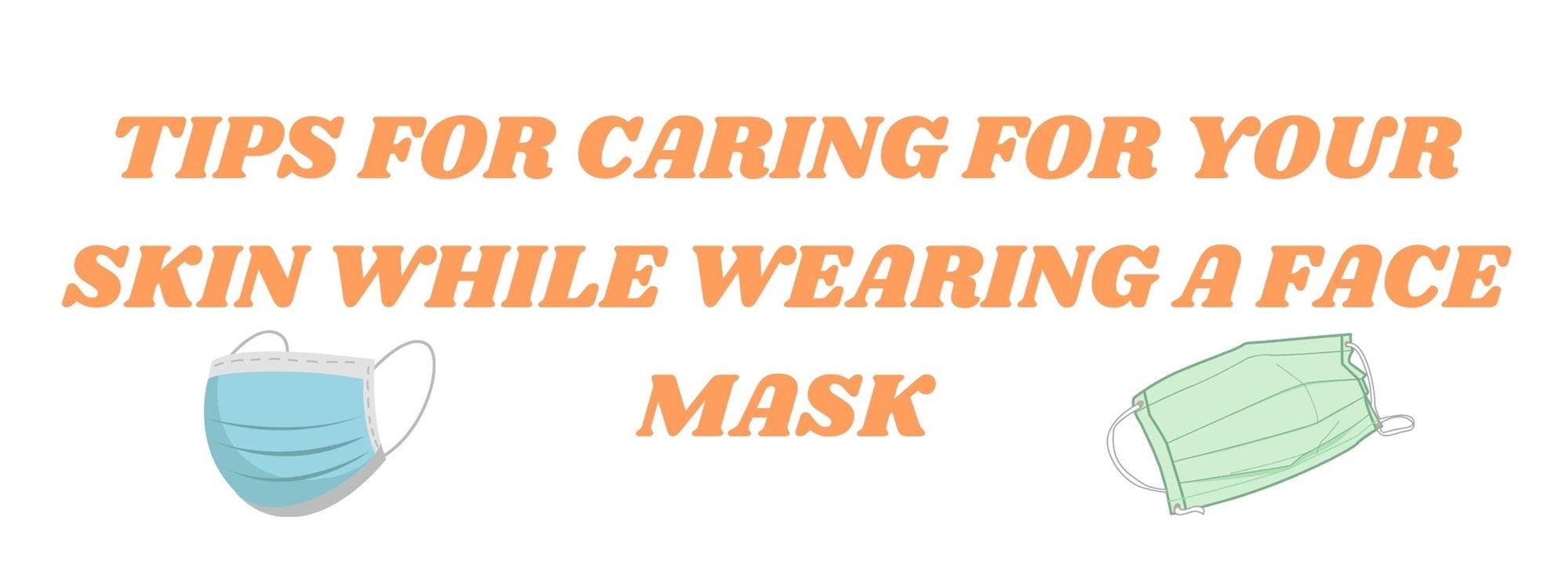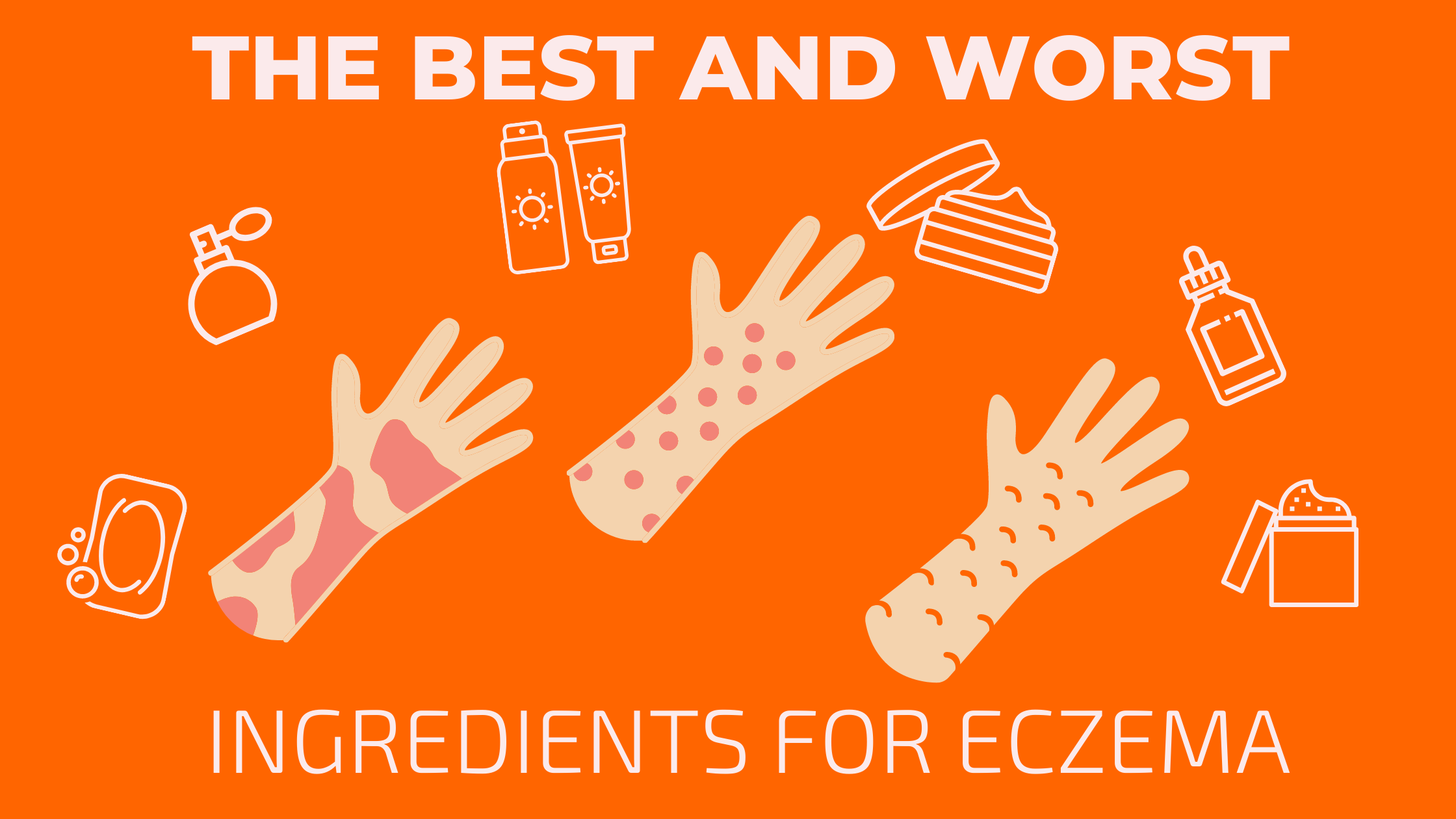
Tips for Caring for Your Skin While Wearing a Face Mask
Now more than ever, we’re trying to stay healthy, and that’s led to some new habits that can cause a shift in day-to-day life, and take some getting used to. One of those habits is the usage of face masks.
The Center for Disease Control recommends that everyone wear a facial covering while in public spaces where social distancing is difficult to help prevent the spread of the virus. For some of us that’s only an hour or two spent at the grocery store each week, but for those who work in the medical field, or another essential service, that can be hours upon hours each day.
Since there was such a huge shortage of disposable masks due to the pandemic, many people, especially healthcare workers, often have no choice but to reuse the same mask for a long period of time. Disposable masks are intended for just a few hours of usage, and most people don’t think to wash their fabric masks or makeshift bandanas. As a result, a number of irritants can build up under and around the mask.
- Warm environment - Face masks and other facial coverings create a moist, warm environment under the fabric, which affects your skin barrier and sets your skin up for irritation and rashes.
- Sweat, Breath, and Saliva are increased in the congested, warm environment under your mask, and since these fluids can’t escape and evaporate, the moisture and bacteria sit on the surface of the skin, clog pores, act as irritants, and further throw off the skin barrier.
- Dirt - If you’re constantly wearing the same mask, all of the dirt and pollution that you encounter throughout this day sticks to the fabric, and is repeatedly reintroduced to the skin.
- Maceration - Then there’s the physical friction and abrasion (otherwise known as maceration) caused by the mask itself. Those who are in the medical field that are required to wear a tight N95 mask, see severe irritation at the points where the mask meets the skin. Even looser fitting fabric masks still move around and rub at the skin. Not to mention, the irritation that comes around the ear area from the straps holding the mask in place.
Due to all these factors, you could be experiencing a number of skin issues including rashes, acne, chafing, perioral dermatitis (contact irritation around the mouth), or severe dryness.
In order to minimize skin damage while wearing a face mask, it’s necessary to make a few significant changes to your skin and personal care habits. The goal is to minimize the number of potential irritants living under your face mask so that they don’t expedite the nearly unavoidable irritation from the mask.
CHOOSE THE RIGHT FABRIC
Pay attention to the fabric of your reusable cloth face mask whether you are purchasing it or making it yourself. Synthetic fabrics like polyester make it difficult for the skin to breathe and trap in more sweat leading to acne flare-ups. Instead, choose a highly breathable fabric like cotton, and opt for one with a higher thread count that’s soft to the touch so that it’s not overly abrasive.
Wash your mask
If you have a reusable fabric mask, throw it in the washing machine as much as possible to remove built-up bacteria. Just throw them in the wash with similar colors (it’s best to put them in a mesh laundry bag meant for delicates so the straps don’t get tangled) and use a hypoallergenic laundry detergent (find out how to make your own here). Try having a couple of reusable masks on hand so you can cycle through them, and don’t have to do laundry as often.
ABANDON MAKEUP
Most makeup like foundation and concealer is comedogenic, meaning it clogs pores. This on top of the fact that your pores are being blocked by the mask is a recipe for acne.
A lot of makeup products are common allergens, and even if you haven’t dealt with allergies in the past, repeated exposure to makeup that contains harsh ingredients, especially under less than ideal circumstances like wearing a restrictive mask, can actually lead to you developing a makeup allergy.
So for the time being, avoid wearing makeup on the area covered by your mask. It won’t be visible for the majority of the day anyway. Taking a mini-break from makeup also has tons of benefits for your skin which you can read about here.
Flavored lip balm is another common culprit of allergic reactions around the mouth, especially ones that contain mint which is one of the most common allergens according to dermatologists. Keeping your lips moisturized is still crucial, and the moisture under your mask can deplete the natural barrier on your lips making them more cracked and chapped than usual. When you do reach for a lip balm, you should opt for a flavor, dye, and fragrance-free lip balm for the best chance of avoiding allergic reactions and irritation.
SCALE BACK CLEANSING
Yes, cleansing is especially important when the mask comes off because you need to thoroughly remove the built-up dirt and sweat that’s been lingering under your mask. However, don’t go so far as to overdo it and cleanse more than necessary. This can further strip the skin of its natural, essential oils, and leave your skin dry.
Cleanse once at the end of the day after removing your mask, and use a gentle, soap-free, pH-balanced cleanser that doesn’t contain any extra added irritants like fragrance, dyes, and sulfates. Remember, the best thing you can do for your skin right now is to minimize the irritants it’s coming in contact with it. We cannot (well, should not) avoid wearing a protective mask, but we can avoid ingredients that will harm our skin.
DON’T SKIP MOISTURIZING
It may seem like moisturizing will add to oil buildup, but as long as you use a lightweight, oil-free moisturizer you don’t have to worry about that. Your skin barrier needs to be moisturized in order to stay balanced, so don’t shy away from this step if you’re fearing breakouts.
NOURISH WITH EMU OIL
If your skin is especially inflamed in certain areas due to maceration from your mask, try rubbing some emu oil on the affected area. Emu oil has been used for its healing abilities for thousands of years, and it’s been shown to help reduce inflammation.
Emu oil also provides intense hydration so if your skin is dry and flakey, smoothing a layer over especially dry patches will help replenish moisture.
KEEP IT SIMPLE
In general, it’s best to keep your skincare routine as minimalistic as possible. Now’s not the best time to introduce any new serums, masks, or scrubs to your routine as they could be a cause for breakouts. Stick to a simple cleanse, tone, moisturize cycle using what you know works best for you and your skin.
DON’T POP
As tempting as it can be to pop a new pimple, don’t! If a new pimple pops up as a result of your mask, leave it be. Squeezing and extracting pimples will spread bacteria to the surrounding area and cause even more breakouts. It also increases your risk for permanent acne scarring. If you have a zit, care for it how you normally would, and don’t worry, your mask will cover it up anyway.
LIFESTYLE
Aside from your skincare, there are also some lifestyle changes you can make that will help your masked skin.
Hold off on chewing gum. The movement of your jaw can cause extra friction and further irritate any rash or redness, and the spit that escapes as you chew will get caught up under your mask, adding even more bacteria to the mix.
The toothpaste you use can also have a large effect on breakouts around your mouth. Toothpastes that contain fluoride, mint, and sodium lauryl sulfate (SLS) are often the cause of perioral dermatitis. Use a low or no fluoride toothpaste that’s free of SLS and mint to minimize the chances of inflammation and irritation.
You’re probably stressed. We all are. But increased stress is detrimental to your skin. Find out what’s going on behind your skin when stress breakouts occur, and stock up on some tips to manage your stress here.
We might be wearing face masks in public for a while, and in the end, some of the skin problems that occur as a result of wearing a face mask are inevitable and unavoidable. All we can do is take these precautions in order to limit irritation as much as possible. We probably all have a breakout or two, but we’re helping reduce the spread of a worldwide virus, so is a little red bump really something to fret over?



Leave a comment
This site is protected by hCaptcha and the hCaptcha Privacy Policy and Terms of Service apply.